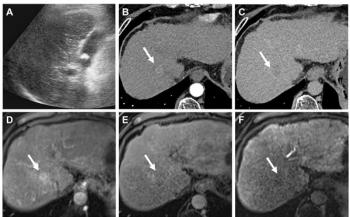
Changing and Maturing Perspectives on AI
Technologies must be integrated with existing platforms and workflows, as well as demonstrate value.
The journey to widespread
Five years ago, people were focused on how AI could address and relieve physician burnout, by helping the radiologist who was facing an ever-expanding workload. But, despite intense levels of burnout, increasing case volume and complexity and staffing shortages, AI adoption has not accelerated as originally expected. The American College of Radiology (ACR) Data Science Institute (DSI) conducted a study1 in spring 2020 and found about one-third of survey respondents reported using AI in their practice. Of those respondents who were not using the technology, only 20% planned to purchase it.
When ACR DSI dug a little deeper into why radiologists were not adopting AI, they found that 80% of survey respondents not using AI in their practices said that they “see no benefit” to using the technology.2 I believe this illustrates the crux of the matter: Is AI valuable to radiologists?
Transitioning from Entrepreneurial to Ecosystem Approaches
Early on, AI in radiology was driven in a very entrepreneurial way—similar to an “if you build it, they will come” model. Many developers built innovative solutions quickly, without necessarily assessing market needs or budget availability.
However, healthcare leaders will put any new innovation to the test, asking: Will it improve quality of care and outcomes? Will it reduce costs or make money? Will it make work easier, faster or better in some way? If it’s not doing any of those things, then the answer will likely be “no, thank you.”
So, despite the fact that many early AI algorithms were innovative and impressive, they may not have targeted common pain points well enough to succeed. I think the industry has also learned from this early, exciting innovation phase that developing and adopting AI is not a standalone process. Technologies must be integrated with existing platforms and workflows, as well as demonstrate value.
Defining value will require thinking deeply about the radiologist’s day-to-day experience and workflow. When I think about my own experience as a practicing radiologist, I can think of a couple of specific areas where AI could bring value to me. First, I look at a recurring task— oncology follow-ups—that show up consistently on my worklist. While not a difficult task, it is repetitive and time-consuming to do it well. Could AI help automate this task on my list? Another way I would find value in AI is in helping identify
Defining the areas where AI can bring value to the radiologist is a critical first step. But when the definition of AI value flows this direction—from clinician to the developer—instead of the other way around as it did in the entrepreneurial model, we also need to re-think how we’re delivering AI.
Orchestration: An Evolving Approach to AI in Radiology
Enter AI orchestration, which is one way
Because each AI application is developed in a unique way with a specific purpose, it can be challenging for organizations to review and assess each one, and then to deploy them in a way that’s beneficial to users. Orchestration offers a single platform that makes it easier to deploy a curated selection of AI applications, to consume their results, and to manage new innovations over time. This approach helps integrate the right toolset—both in the physician’s workspace as well as the IT environment.
At
Ultimately, I believe radiology will be better off when AI development and adoption engages all stakeholders—clinicians, developers, executive leaders, administrators, academia, organized medicine and other experts across the industry. If we think about the problems we need to solve together, we can bring greater value. The industry is starting to get there, and I expect great things yet to come.
For more coverage of RSNA 2021,
Newsletter
Stay at the forefront of radiology with the Diagnostic Imaging newsletter, delivering the latest news, clinical insights, and imaging advancements for today’s radiologists.




























